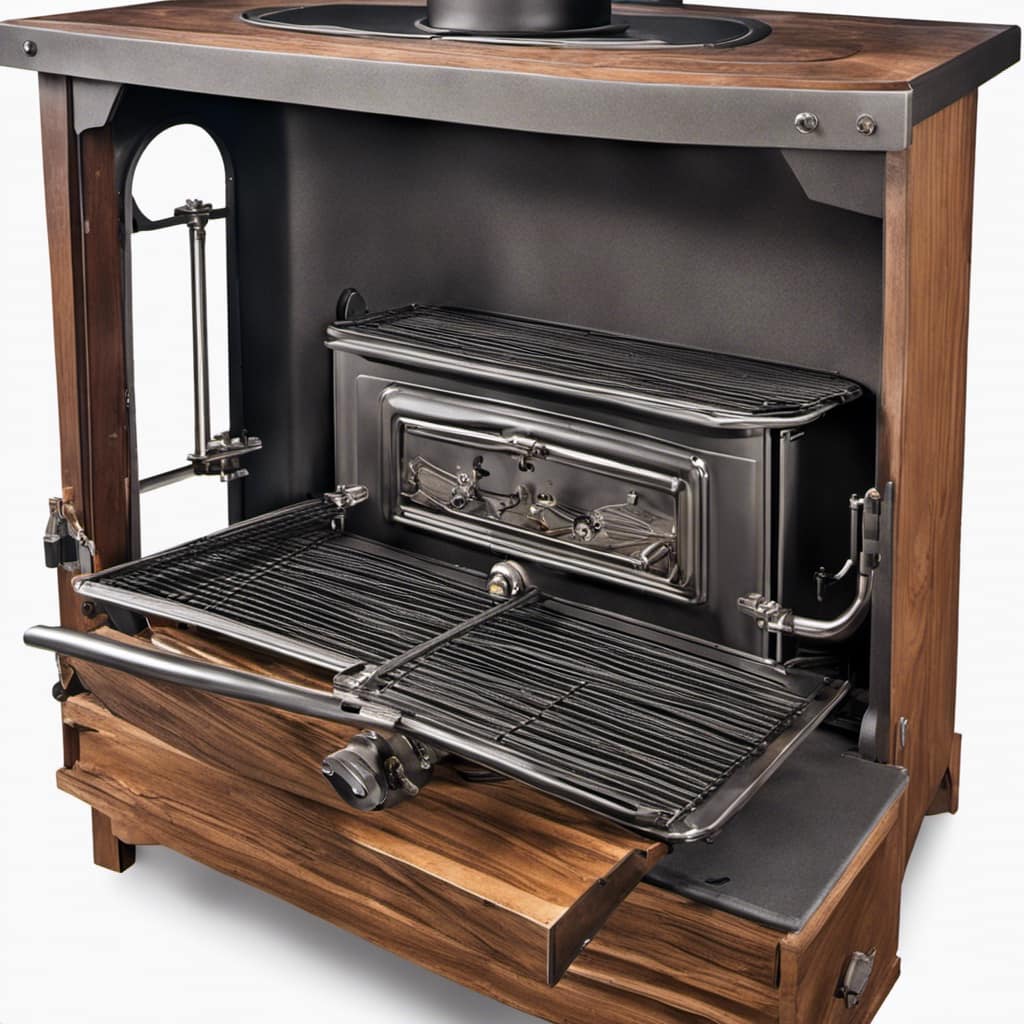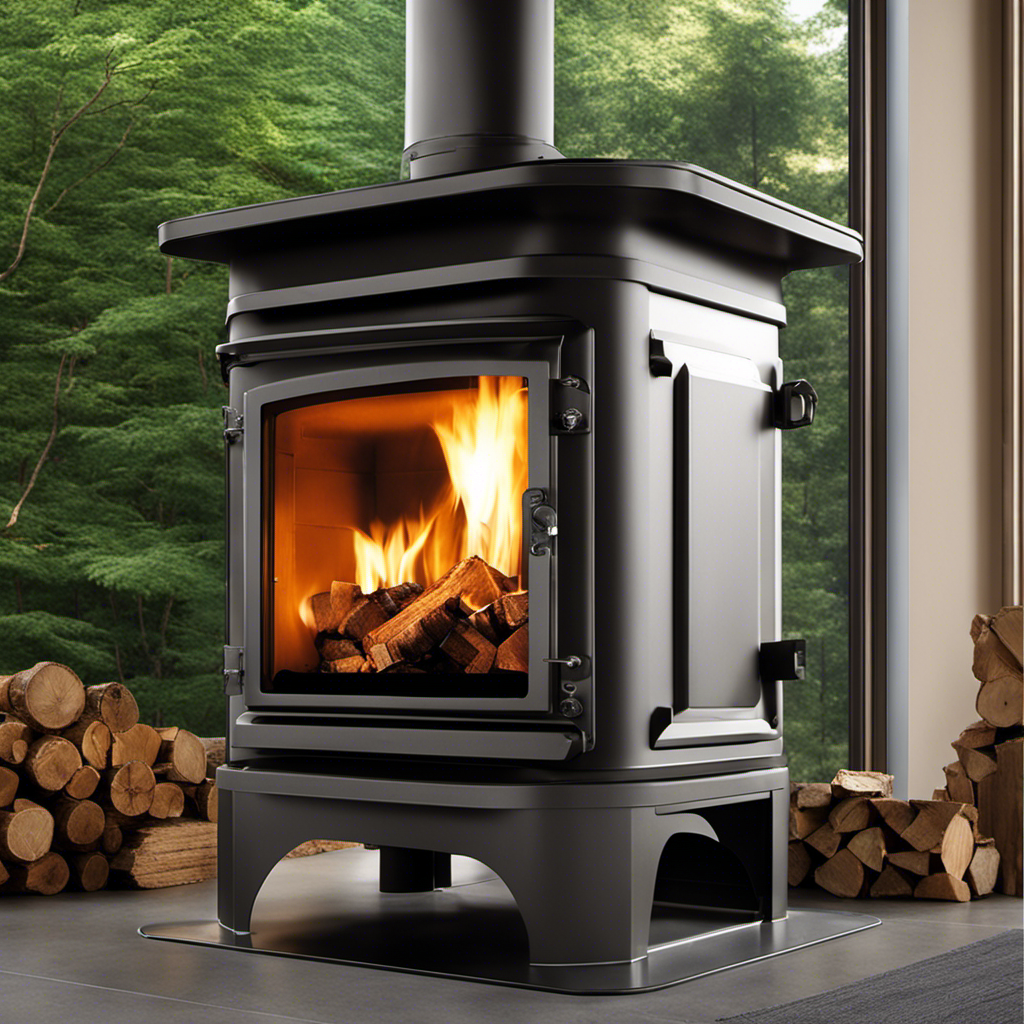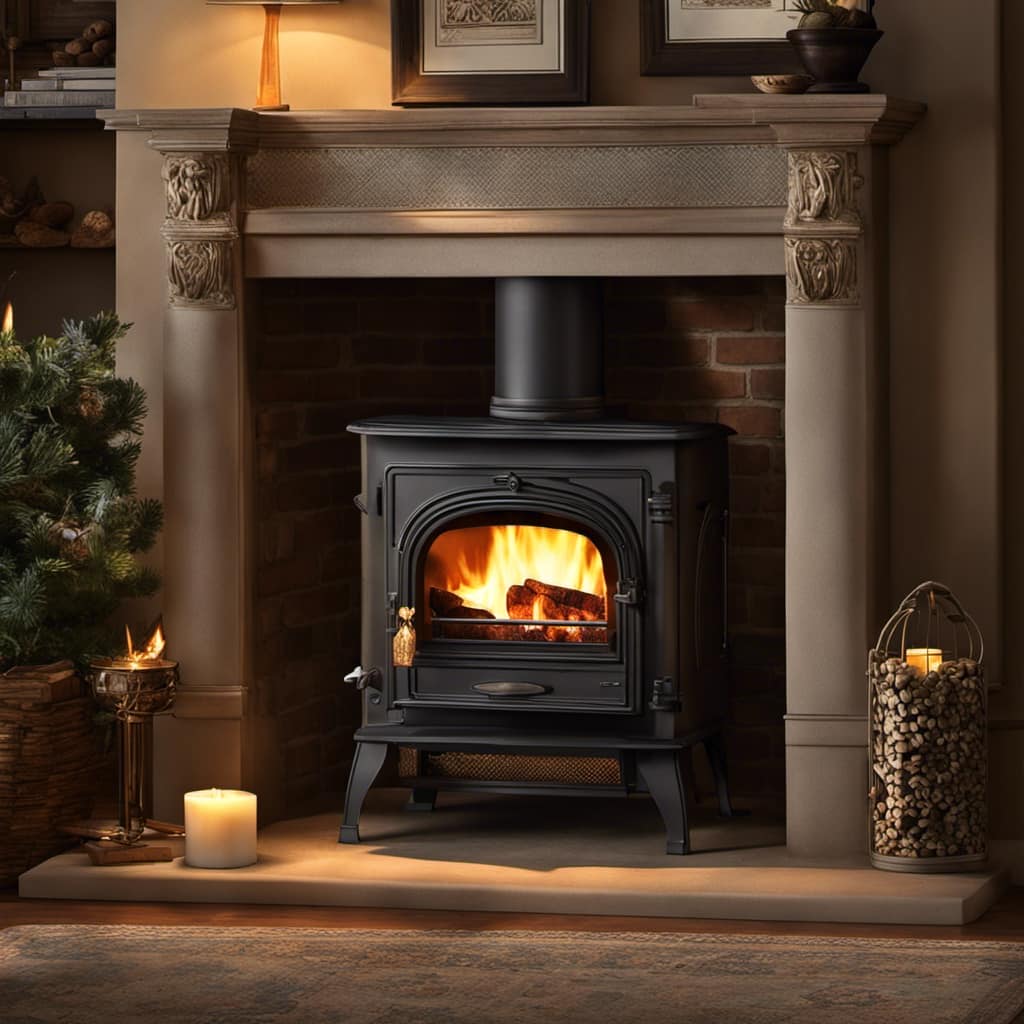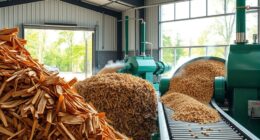Having spent a significant amount of time working with wood stoves, I understand the annoyance of waiting for hardwood to dry completely before you can burn it. But don’t worry, fellow cozy fire lovers! In this article, I will impart the knowledge I have gathered on how long it takes to season hardwood properly, so you can enjoy a warm and inviting fire.
From the factors that affect seasoning time to the signs of well-seasoned wood, I’ve got you covered. Let’s ensure maximum efficiency and warmth in your wood stove!
Key Takeaways
- Seasoning hardwood for at least six months is important before burning it in a wood stove.
- Properly seasoned hardwood has a low moisture content, below 20%.
- Storing seasoned hardwood off the ground and in a well-ventilated area helps maintain its quality.
- Regularly checking and maintaining moisture levels in stored wood ensures maximum efficiency.
The Importance of Seasoning Hardwood
I strongly believe in the importance of properly seasoning hardwood before using it in my wood stove. There are many benefits to using seasoned hardwood in fireplaces.
First, it burns more efficiently, producing more heat and lasting longer. Seasoned wood also produces less smoke and creosote buildup, reducing the risk of chimney fires. Additionally, properly seasoned hardwood has a lower moisture content, which means it ignites more easily and burns cleaner.

To ensure the best results, there are some common mistakes to avoid when seasoning hardwood for burning. One mistake isn’t giving the wood enough time to dry properly. It’s recommended to season wood for at least six months, but a year is even better. Another mistake is stacking the wood too tightly, preventing proper airflow. It’s important to stack the wood loosely, allowing air to circulate and aid in the drying process. Lastly, using green or unseasoned wood can lead to excessive smoke and poor combustion.
Factors Affecting Seasoning Time for Hardwood
One factor that affects the seasoning time for hardwood is the amount of moisture in the wood’s cells. The moisture content of the wood plays a crucial role in how quickly it can be dried and ready for use. Factors such as the species of the hardwood, initial moisture content, and environmental conditions all influence the drying time.
For example, denser woods like oak or hickory may take longer to season compared to softer woods like pine. To ensure the best results and minimize drying time, it’s important to follow certain best practices for drying hardwood.
This includes cutting the wood into smaller pieces, providing proper air circulation, and storing the wood in a dry and well-ventilated area. Additionally, monitoring and maintaining proper moisture levels throughout the drying process is essential for achieving optimal seasoning time.

How to Properly Season Hardwood for Burning
To properly season hardwood for burning, it’s recommended to allow the wood to dry for at least six months and then stack it in a well-ventilated area. This process is crucial for ensuring a clean and efficient burn in your wood stove.
Here are three best practices for seasoning firewood:
-
Choose the right type of hardwood: Hardwoods like oak, maple, and birch are ideal for burning as they’ve a higher energy content and burn longer compared to softwoods.
-
Split the wood into smaller pieces: Splitting the wood exposes more surface area to the air, allowing for faster and more effective drying. Aim for pieces that are around 3-6 inches in diameter.

-
Store the wood properly: Stack the wood in a location that provides good airflow, such as a woodshed or a covered area with open sides. Keep the wood off the ground to prevent moisture absorption.
Signs of Well-Seasoned Hardwood
The crackling sound and the warm glow of the well-seasoned hardwood in my wood stove create a cozy atmosphere in my living room. When it comes to burning hardwood in a wood stove, it’s important to ensure that the wood is properly seasoned.
Well-seasoned hardwood has certain characteristics that make it ideal for burning. First, it has a low moisture content, usually below 20%. This ensures that it burns efficiently and produces less smoke. Second, well-seasoned hardwood is denser, which means it contains more energy and provides longer-lasting heat.
Additionally, properly seasoned hardwood burns cleaner, reducing the buildup of creosote in the chimney, which can be a fire hazard. The benefits of using well-seasoned hardwood in a wood stove include increased energy efficiency, reduced environmental impact, and improved air quality.

Tips for Storing Seasoned Hardwood for Maximum Efficiency
I always stack my seasoned hardwood tightly, and I use tarps to cover it during rainstorms for maximum efficiency. Storing firewood properly is crucial to maintaining its quality and ensuring it burns efficiently. Here are three important tips for storing seasoned hardwood:
-
Keep it dry: Moisture content in firewood should ideally be below 20% for efficient burning. Storing firewood in a dry and well-ventilated area helps to prevent the wood from absorbing moisture from the environment.
-
Elevate the wood: Storing firewood off the ground helps to prevent the wood from coming into contact with damp soil or grass. This reduces the chances of moisture seeping into the wood and promotes better airflow, allowing the wood to continue drying.
-
Allow for air circulation: Proper airflow is essential for drying and maintaining the quality of firewood. Stack the wood loosely to allow air to circulate between the logs, facilitating the drying process. Avoid tightly packing the wood, as it can trap moisture and hinder drying.

Frequently Asked Questions
Can I Burn Hardwood That Hasn’t Been Properly Seasoned?
I wouldn’t recommend burning green hardwood that hasn’t been properly seasoned. It can lead to inefficient burning, excessive smoke, and increased creosote buildup, which can cause chimney fires and damage to your wood stove.
What Is the Best Type of Hardwood for Seasoning and Burning in a Wood Stove?
The best way to store seasoned hardwood is in a dry, covered area with good ventilation. To properly split hardwood for seasoning, aim for even-sized pieces and stack them loosely for airflow.
How Long Does It Take to Season Hardwood if I Live in a Humid Climate?
Living in a humid climate affects the seasoning process of hardwood. To properly store seasoned hardwood, ensure it’s kept in a dry, well-ventilated area. The duration of seasoning depends on various factors.
Can I Speed up the Seasoning Process for Hardwood?
I can speed up the seasoning process for hardwood by ensuring proper airflow and moisture control. This will benefit me by providing wood that burns more efficiently and produces less smoke in my wood stove.

Should I Cover My Seasoned Hardwood When Storing It for Maximum Efficiency?
Covering seasoned hardwood when storing it for maximum efficiency has pros and cons. On one hand, it can protect the wood from moisture and insects. On the other hand, it may hinder airflow and slow down the drying process.
Conclusion
So, you’ve learned all about the importance of seasoning hardwood before burning it in your wood stove.
You now know the factors that affect seasoning time and how to properly season your hardwood for maximum efficiency.
Remember, well-seasoned hardwood is the key to a cozy and warm winter. So, don’t be impatient and throw green wood into your stove, unless you want to turn your cozy home into a smoky sauna.

Take the time to season your hardwood properly, and you’ll be rewarded with a toasty fire and a satisfied smirk on your face.
Growing up surrounded by the vast beauty of nature, Sierra was always drawn to the call of the wild. While others sought the comfort of the familiar, she ventured out, embracing the unpredictable and finding stories in the heartbeat of nature.
At the epicenter of every remarkable venture lies a dynamic team—a fusion of diverse talents, visions, and passions. The essence of Best Small Wood Stoves is crafted and refined by such a trio: Sierra, Logan, and Terra. Their collective expertise has transformed the platform into a leading authority on small wood stoves, radiating warmth and knowledge in equal measure.











